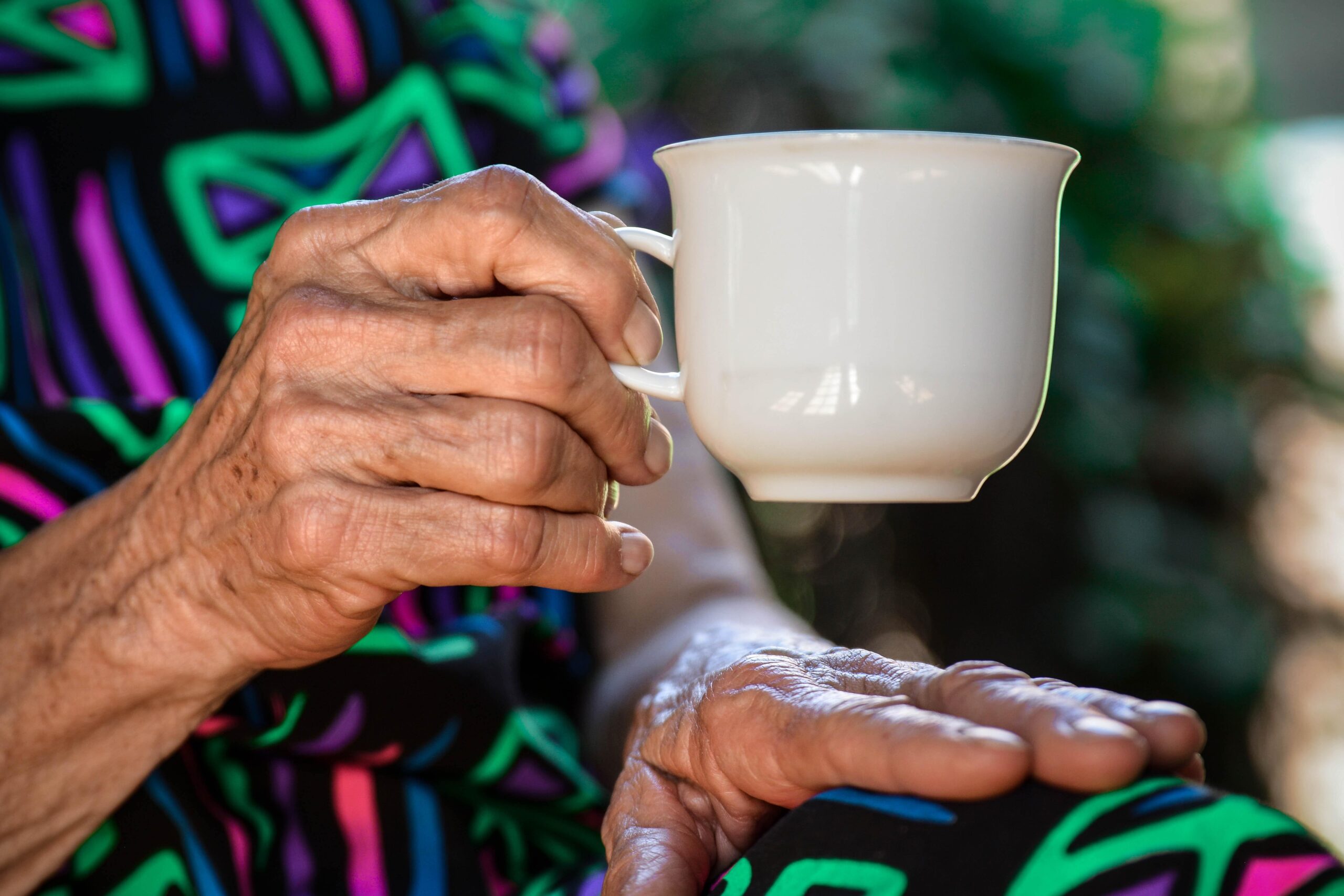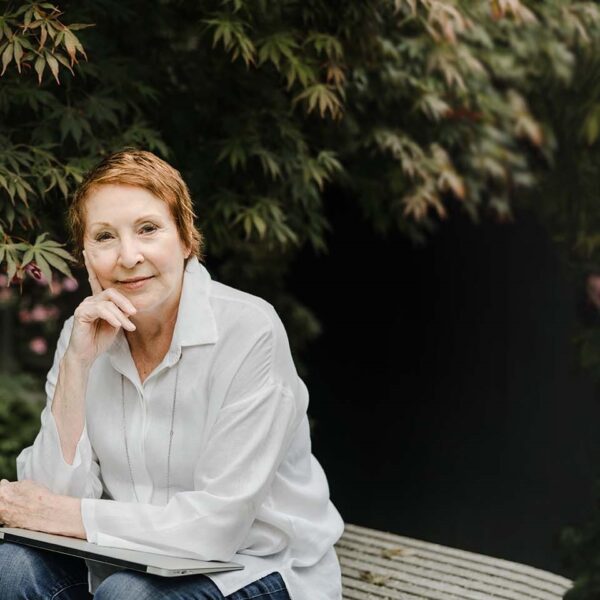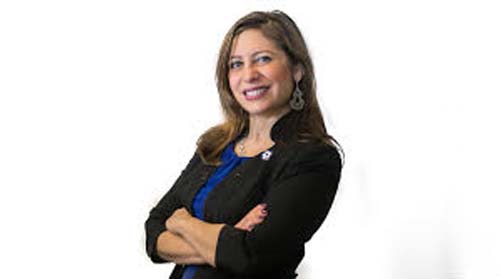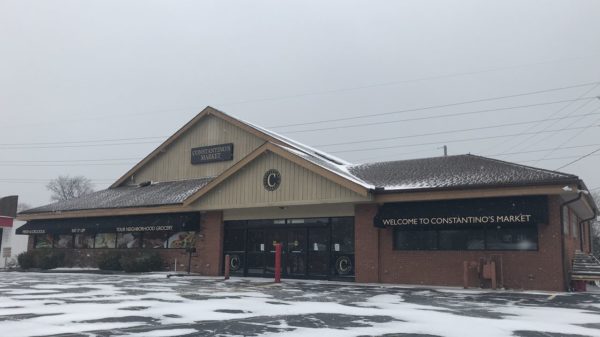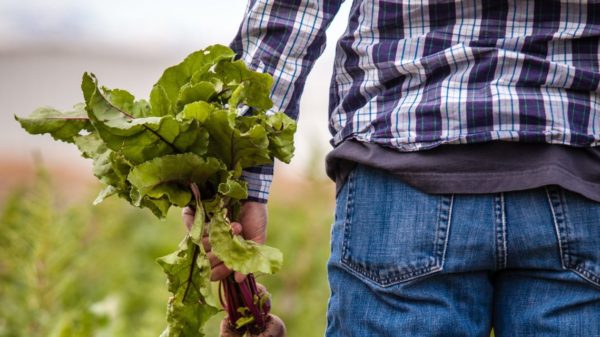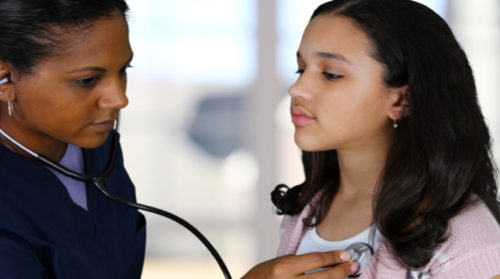More than 22 percent of Californians are over the age of 65. 70 percent of deaths from Covid-19 are of people ages 65 and older. Older adults are now struggling with multiple viruses, including COVID-19, RSV, and the flu.
A briefing hosted by Ethnic Media Services (EMS) in partnership with the California Department of Aging addressed how California is taking the lead on care for older adults and those with disabilities, especially amid the winter virus surge. The discussions focused on harm reduction measures such as masking, testing, and simply staying home and sharing resources the state offers for older adults, people with disabilities, and caregivers.
The state of California is looking to the future and California’s Master Plan for Aging (MPA) affirms the priority of the health and well-being of older Californians and people with disabilities. It is a “blueprint” to prepare the state for the coming demographic changes and continue California’s leadership in aging, disability, and equity. How can other states implement California’s novel model?
Dr. Tomás Aragón – State Public Health Officer and Director, California Department of Public Health
Illustrating the trends through slides he explained:
“For the past few weeks in California, we have been dealing with an increase in viral infections impacting all ages and kids. The percent positivity reflected for RSV as well as the percent of specimens that are testing positive because this time of year people spend more time indoors, it is colder, you get infected and we expect viral respiratory tract infections to go up. On the left-hand side, you see those orange circles, those are the kids and testing is more commonly done in kids. If you go down to the bottom you see you’ll see the red circle those are adults. The good news is that it has peaked and fingers crossed became RSV came early this season but it is going down.
Unfortunately, influenza took over and we are we haven’t seen influenza going up. The slide represented weekly influenza hospital admissions which looked at different years. So the big peak was in 2017 and 2018 when we had a big epidemic of hospitalizations from influenza. Based on the slide data we’ve also begun to somewhat peak with influenza which is good news. And it’s just like RSV it’s come early. One of the things we’ve seen with influenza in prior years is that you have an initial peak, it goes down a little bit and then it goes back up. So we’re not out of the woods at all. Here in California for covid-19 see our slide reflects why we’ve given a lot of vaccinations, we’ve been very successful in making sure that our population has received its primary series. Our challenge now is to have older people especially those 50 and older to be up to date on their boosters. This is really important because the sub-variants of Omicron have developed the ability to escape immunity and to cause infection. All of us have waning immunity, in other words, our immunity goes down over time even if we’ve been boosted or had an infection in the past and we’re at the time of year when there’s just a higher risk. So for those reasons, it’s really really important for everybody to get boosted and to be up to date on their vaccines. Just like influenza, we see that there has been some peaking in terms of the test positivity and the cases and even the hospitalizations and so we’re keeping our fingers crossed that this will hopefully go down. Again we still have a lot of winter ahead of us and so it’s impossible to completely predict. This is from the CDC Community levels which gives us an idea of the risk of infection in a community. This map here is based on hospitalizations. Hospitalizations begin to go up about 4 weeks after transmission goes up, so transmissions precede hospitalizations. You have to realize that you actually want to think ahead, so right now even though you see here that 75% of the population in California is at a medium level, the truth is that that means that there’s really a lot of transmissions. So you combine both medium and high we see that close to over 90% of the population in California is in a county where there is a lot of transmission happening. And so this is really important for us to take protective measures.
Another slide focussing on California showed the following: we have hospitals on average across California that are at a hundred and twenty percent of their baseline census, which means that they are 20% above what they do normally and the hospitals are packed and they’re packed with not just patients with respiratory symptoms but also patients that have many other things just from delayed care. So the burden of people who have covid and people who have influenza you can see that as those went up the hospital fences went up. So it’s really an epidemic not just of the respiratory viral infections of which covid and influenza are only 2 there are a lot of respiratory viruses. We focus on those because we can do a lot about them, but it’s also an epidemic of just the hospitals being packed with patients who need care from all different types of diagnoses and that’s why the hospital systems are stressed and then imagine that these infections affect healthcare workers, they are exhausted, they’re tired and they’re sick, so there’s also staffing shortages that contributes to the Strain that the healthcare systems are experiencing. So in California, we have what’s called the “SMARTER PLAN,” which is really sort of focusing on how we manage all of this and it’s not just about covid. It includes taking into account the other respiratory viruses. So we have a very integrated approach. Of course one of those is vaccines, so if you look here at the primary series which we have done a great job with the primary series, our challenge right now is needing people to get vaccinated and to be up to date. So looking here at the Bivalent Booster, of those that are eligible only 30% of people above age 50 have received their booster. So we need people to get vaccinated, it’s never too late, it’s a long season, and if you are not up to date with your booster it’s great to do that. We also remind people that in order to prevent infections no intervention is a hundred percent. Collectively they do a job so yes get your vaccines, wear a well-fitting mask that has good filtration, ventilation is important, etc, this virus is airborne. You get infected by sharing airspace with people where the virus is concentrated especially indoors; opening the windows, opening doors, having good ventilation, doing things outside, of course getting tested and then getting treatment if you test positive and you have symptoms.
I want to emphasize that the biggest risk factor for complications, hospitalizations, and death from covid is just age. So you compare 18 to 29-year-olds go over to 50 to 64-year-olds you see that the chance of dying is 25 times those that are 18 to 29 years old and it goes up to 60 times, 140 times, and 340 times. Age is the biggest risk factor and of course, if you have medical conditions on top of that it increases the risk even more. But age by itself! I want to end here by just reminding everyone is again to vaccinated against influenza and covid-19 to be up to date. If you develop symptoms, stay home, and make sure you test yourself for covid-19. It’s really critical to get on treatment, the best thing to do is to have a treatment plan before you become infected because sometimes your provider may not be available and you want to have that plan ahead of time, especially if you’re on medication, so you have a plan what to do because the medications can interfere with each other so you want to have a plan ahead of time. Of course, wear masks, that’s a reminder that covid is airborne, it’s in the air, and it concentrates so masking is important, washing your hands and of course, covering your cough if you have symptoms and the easiest way to do that is to wear a good mask, that really goes a long way.
Jessica Lehman – Executive Director, Senior and Disability Action
I work for seniors and people with all kinds of disabilities and who were also black, indigenous, and people of color who are poor or marginalized in multiple ways. I will talk a little bit about the landscape as far as the pandemic.
Everyone may remember that covid first hit people especially hard at skilled nursing facilities and it took a while for that information to come out but because it was older people, it was people with disabilities, people who were in very close quarters, and nursing facilities are typically understaffed and so there’s not always the time and capability to make sure that there’s a lot of protection between people. So people died in massive numbers and of course as people outside of nursing facilities started getting sick and dying and I remember when the headlines started coming out saying, “only older people and disabled people are dying”, it was kind of an attempt to reassure the general public that they didn’t need to worry, that it was only these certain communities that were really getting hit by it. “But other people might get sick but would probably be okay” and that was one of the moments we saw in the pandemic this huge division for people to just say out loud or to say in newspaper headlines what I think many of us with disabilities and older people often hear, which is that we are seen as not a major part of society, that we are seen as something separate and something that is okay to ignore. And one of the major lines that folks started using and particularly from the higher-weight community is, “nobody is disposable”, and I think many of us very much recognize that people saw us as disposable. We are seeing that even now and we need to be talking about it, but there is this idea that if you are vaccinated you’re probably fine being around other people, doing things inside, going back to indoor dining, going to big holiday parties, not wearing masks except those with high-risk conditions. And it’s just like, well some people can’t do this but everyone else can go out and have a good time. And it is creating further division in our community and none of us from the disability and senior community are saying, “you know everyone should live in fear and no one should do anything”. This has been emotionally and logistically complicated for everyone but to say, let’s talk about how we approach this as a community and that means not saying these people do this, and those other people can worry about themselves. There’s this lack of recognition but a huge number of people are at risk whether they are older people, people with certain disabilities, higher weight people, and that all of us at higher risk are also part of families with other people, that we are part of communities, that we are connected in multiple ways. One of the other major problems that came up early on in the pandemic was care rationing and recognizing the hospitals were filling up, and the hospitals themselves were worried about what would they do if they couldn’t treat everyone. How would they decide who to treat and when? And so hospitals and states were coming up with guidelines about crisis care and major coalitions came together: disabled groups, senior advocates, and higher-weight people to fight against policies that would propose to determine which lives to save based on the number of years people have left or even worse what’s called quality-adjusted life-years, and this is an idea that is very outdated and a lot of people recognize that but certainly not everyone does, where the idea of the quality of someone is decided by people who are not disabled and who are not older and this tremendous assumption that if you have any number of disabilities that your life isn’t as good. And so if that decision must be made better to sacrifice you than a young non-disabled person. Again recognizing that disability comes up disproportionately in communities of color, immigrant communities, in poor communities, these policies were not only ableist and ageist, but they were also very clearly racist and classist and brought in every other kind of oppression. We really need to take this moment to talk about ableism you know oppression based on disability and ageism, to recognize that they are real and to not miss that opportunity to get people to see that they came up so prominently in the covid pandemic and are still here, we need changes to our Healthcare System, we need to continue masking, there is much more public support for masking than our government officials like to talk about and we need to be requiring masking in public buildings, and libraries, on public transportation, places where all of us go and where seniors and disabled people are even more likely to go. Thank you to the California Department of Public Health for continuing to require masking at hospitals and other medical buildings, I think most people find it appalling that the CDC ended that requirement so now it’s state-by-state. Our communities need more outdoor events and hybrid meetings, and events and remembering the concept of Universal Design that if we’re looking at what benefits seniors and disabled people right now that is also going to benefit everyone and create the kind of integrated cohesive communities that we all need.
Ana Acton – Deputy Director of Independent Living and Community Access Division, California Department of Rehabilitation
We work a lot on ensuring that people with all types of disabilities have access to employment and Community Living so that they have the ability to live, work, and play where they choose to live. The Center for Independent Living as they are called in other states exist in every state, in California, they are called the Independent Living Center and they serve people regardless of what type of disability they have, any type of disability, and regardless of what age the individual is so, this is going to include individuals from birth to death, older adults, children and everything in between. They provide a whole variety of peer-delivered services. Services are delivered by people with disabilities to people with disabilities, these are consumer-driven, person-centered, whole-person types of services. They do a lot on advocacy, individual advocacy, systems change advocacy, as well as providing direct services to individuals. So during covid-19 we really saw this network of organizations pivot what they typically do to identify unmet needs of people with disabilities and older adults. It wasn’t just older adults, it was some younger people with disabilities and certain health conditions impacted by covid-19. I’m a person with a disability who uses a wheelchair, I have type 1 diabetes, considered overweight, so all these things will stack up for some people who are younger and make covid 19 experience a greater impact for them. We saw these Independent Living centers really look at assessing these unmet needs. Not only were they an issue during stay-at-home orders and the beginning of the pandemic, but there continue to be these ongoing issues for people with disabilities, in older adults. so we talked a little bit about isolation and loneliness, this really is something that became really apparent early on and continues to be an issue. Jessica talked a little bit about that in context to how people still are struggling with going out if they are disproportionately at risk of complications from covid-19, their ability to interact in the community, connect with family, friends, and what-have-you is still being impacted today so we saw the independent living centers really work to do wellness checks, reach out, get people connected to services, virtually and in safe settings. We also saw an issue around the digital divide for people with disabilities of all ages and older adults to be able to access telehealth, to be able to access food, and essential goods and services, we still have areas of the state that lack good Broadband access, so what do you need to be able to access systems virtually or in hybrid settings we need the equipment, the computers, we need the broadband access, the skills right to be able to utilize this equipment and technology to access services, so this is where we saw the independent living centers really provide equipment, provide support for people to access these goods and services virtually. Food access was a huge issue, we saw a lot of work being done to increase access to food for older adults, home delivered meals the Great Plate program was wonderful but there were younger individuals with disabilities that didn’t have access to some of those resources so we saw the independent living centers put together a grocery bag delivery programs to address the needs of those at risk under the age of 60. We saw a food pantry set up, things they had never done before to really address those at might need it. There was also a piece with transition and diversion you did here Jessica talk a little bit about how to congregate settings were disproportionately impacted, we saw high numbers of people with covid and deaths from covid of older adults and people with disabilities and so the independent living centers did a lot of work to help make that bridge to transition people from a congregate setting to home so they could be with family and friends during the pandemic and also a lot of diversion services keeping people from going into those congregate settings and prevent them from going into those higher risk settings.
Dr. Donna Benton – Director, University of Southern California Family Caregiver Support Center, discussed how the heightened
Let me start by giving you a scenario: when you have a cold when you have the flu when you catch covid, who’s going to take care of you? You probably think,’ oh that’s going to be my spouse, that’s going to be my adult child’, maybe you have a neighbor who is taking care of you and anytime we do get sick, besides reaching out maybe to our doctor it’s usually a family member who is providing that care to us. And why is this important in relation to covID? Because often time the family member is younger, they might be working and with covid-19 are going to have to take time off work to help another family member, an older adult who may have dementia, who may have multiple medical problems and when they have to take time off work, do we have policies and procedures in place to help protect that caregiver who has spent now going on almost over 3 years to try to protect the older adult within the family across generations, but those family caregivers are usually the front line workers for 80% of older adults who are at risk during this pandemic and now with all the flu and vaccines they’re the ones that have to coordinate and get the person their shots and vaccinations and they looked at a survey and nationally it has actually since covid the number of family caregivers who say that they are having difficulty coordinating care during this pandemic, has risen from about 19% in 2015 to over 26% in 2020. So the pandemic has made it harder for families to help the older adult function, we’ve seen an increase in the number of family members who are caring for more than one person since 2015, it’s gone from 18% to 24% and so as family members also are trying to coordinate and help somebody who may have covid and they’re trying to keep them from getting covid, from getting the flu, from getting any of these infections that make it worse, their own health is also suffered during this time and we’re seeing an increase of family caregivers to report that their own health is gone from fair to poor and that’s also increased during this time. While what’s nice is as we’re looking to provide care for older adults, we also need to make sure that those families and friends and I mean a family of choice, so it may be by blood, by affinity, we need to make sure that they’re able to get PPEs that there is easier access for home-delivered vaccines and I know in California we do have programs where people can come to the home and provide vaccines, very underutilized program, not marketed enough, we need to make sure that people understand how they can use Paid Family Leave in California during those times and their covid leave ability during the time when they need to care for someone. I just want you to think about as we noted family across all ethnic groups is the key and the lynchpin as someone said to me which I like to quote what they said to me which was that, “the family members who are the primary caregivers may be invisible but they are indispensable for keeping and helping us manage covid now called a triple pandemic” and it’s going right now. The other thing I want to point out is that we do have in California, The California Caregiver Resource Centers who are providing comprehensive services to family caregivers and during the times when covid started we too had to make adaptations like those mentioned for the disability community and that our population wasn’t 65 but we had to help with bringing meals into the home so that they didn’t have to expose themselves while they were caring for someone else. We got PP he’s for family caregivers because they weren’t noticed as essential workers although they were caring for 80% of the population and so we want to make sure that we want to help people have that balance because many people are returning back into work and not working from home anymore, as people are back in the community we need to be able to help families meet this pandemic’s challenges.
Susan DeMarois – Director, California Department of Aging shared what California is doing right or wrong.
One thing you’re doing right is focusing on this topic today so I want to thank all of the journalists that are covering the session Ethnic Media Services. It is such an important partner in our work, we know the data we now have data entering our third year of this covid pandemic, and a point of pride in California is that we enjoy one of the longest life spans in the nation but across the country, life expectancy has decreased and it’s decreased in particular in the Latino, Asian and black communities and for those who live in the lowest income census tracts. So this topic is very real and very important so thank you so much for your focus.
I wanted to share two areas, one is here at the Department of Aging in California and there are departments like ours across the country, there is an entire network of area agencies on aging in every state and this is where older adults and family caregivers can get started with their question and their concern. and this is where they can begin to get linked to other services that help keep them safe at home, help keep them engaged in the community and congregate settings like Adult Day Care, congregate meals sites, and also help navigate and guide and make choices in decisions around boarding care homes, assisted living and skilled nursing. We are very proud to have an adult information line here at the Department of Aging. The number is 1-800-510-2020 and that can link you to all of the services I just mentioned and many more. In particular home-delivered meals, transportation, and assistance with home modification so that people can continue to live safely at home, something we are encouraging right now and it’s a mixed message, I of knowledge is we really want to combat social isolation and part of that is reconnecting with family, friends, neighbors and the community and that’s very difficult we understand right now with this triple pandemic and so the way to safely gather and re-assimilate with the community is to make sure that older adults and their family caregivers are vaccinated, boosted and that their boosters have been updated so that they’re caught up with the times. That message we want to get across to reinforce what you’ve already heard. We also want to make sure that people know that there are free testing kits available again through the Biden Administration that can be delivered to your home, that we’re seeing increasingly that health plans and providers are making Paxlovis available in the home by pre-arrangement, we heard that from Doctor Aragon to have a treatment plan that’s part of it, is to be able to access that treatment at home if need be. Those are important messages we wanted to convey in December and we know through the New Year people will be gathering and that is a very good thing. In California, we have a master plan for aging, our governor Gavin Newsom implemented this by executive order nearly three years ago and we’re working across five bold go areas: housing, health equity, and inclusion, caregiving networks and this is our Direct Care Workforce who are on the front lines and also who are at high risk of RSV, flu, and covid-19. Caregivers as you just heard from Dr. Benton and then at our 5th bold goal is to focus on affording Aging, we know for older adults across the country, housing, Healthcare, utilities, and prescription drugs that costs are escalating and are out of reach for so many older adults in their families.

